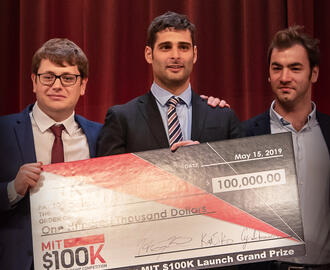Credit: https://www.flickr.com/photos/68751915@N05/6355844351
CAMBRIDGE, Mass., October 24, 2018 – The Golub Center for Finance and Policy (GCFP) at the Massachusetts Institute of Technology (MIT) is launching a contest to generate strategic proposals aimed at enhancing retirement plans covering millions of public sector workers across the US. A prize pool of $20,000 will be distributed to the winners who propose the most well-reasoned, prudent and implementable strategies. Everyone is eligible to participate. Submissions from students, academics, investment advisory professionals, pension fund managers, as well as from experts in asset-liability management are particularly.
The US has experienced a sharp decline in the number and size of defined benefit (DB) pensions in the private sector as firms have increasingly offered defined contribution (DC) plans, such as the popular 401(k), to their employees. That shift is due to a variety of factors including high costs to firms of DB plans, tightened disclosure requirements and a decline in unionization. By contrast, DB plans remain prevalent in the public sector with almost all states and cities continuing to sponsor such plans.
Public sector unions have resisted the move to DC plans for a variety of reasons including concerns about plan underfunding associated with shifting investment responsibility from employer to employees. They contend employees—if newly responsible for making their own investment decisions and with limited financial knowledge—could make poor choices leaving them at risk for inadequate retirement income. Notwithstanding the preference for DB in the public sector, such plans are increasingly under severe financial stress, calling into question their sustainability. Unfunded liabilities for state and city pension plans—the shortfall between the present value of plan assets and future benefits owed—is estimated to exceed $5 trillion.
Thus, a challenge exists to consider development of a third type of retirement plan, which manages risk better than a DC plan while operating at the lower costs of a DB plan. One potential alternative has been described as a collective defined contribution plan (CDCP). The contest underway at MIT seeks proposals for operationalizing such an alternative approach to public sector retirement funding.
Contest sponsor and MIT Sloan Senior Lecturer Robert Pozen pointed out, “A key feature of a CDCP is that all employer and employee contributions are invested and managed in one collective pool. Benefits depend on investment performance, but risk sharing across multiple generations of retirees increases the predictability of benefit payments.”
Under a CDCP, individual employees would have a notional personal account balance consisting of their contributions, any employer matches and the collective investment returns allocated to that account. While those balances would be tracked and benefit distributions would be linked to those balances, the actual assets would be held in the collective pool.
According to MIT Sloan Professor and GCFP Academic Director Deborah Lucas: “The goal of the contest is to find the highest level of scheduled benefits that a well-structured CDCP is likely to deliver to retirees. We’re looking for input on an investment strategy and risk-sharing policy that could be followed by CDCP managers to provide retirees with the highest achievable scheduled benefits subject to the limits on the probability and severity of benefit shortfalls.”
The contest is now open and submissions will be accepted through January 15, 2019. For more information, visit the contest website at http://gcfp.mit.edu/cdcpcontest/.
About the MIT Golub Center for Finance and Policy
The mission of the MIT Golub Center for Finance and Policy (GCFP) is to serve as a catalyst for innovative, cross-disciplinary and non-partisan research and educational initiatives that address the unique challenges facing governments in their role as financial institutions and as regulators of the financial system. The Center is building a foundation that, in keeping with its mission, will support transformative improvements in the development and execution of financial policy today and in the decades to come. It leverages the Institute’s reputation of academic excellence and commitment to public service, and the acumen of the MIT Sloan School of Management—long regarded as having one of the preeminent financial economics departments in the world. For more information on GCFP, please visit: http://gcfp.mit.edu
About the MIT Sloan School of Management
MIT Sloan School of Management is where smart, independent leaders come together to solve problems, create new organizations, and improve the world. Learn more at mitsloan.mit.edu.
Related Articles



